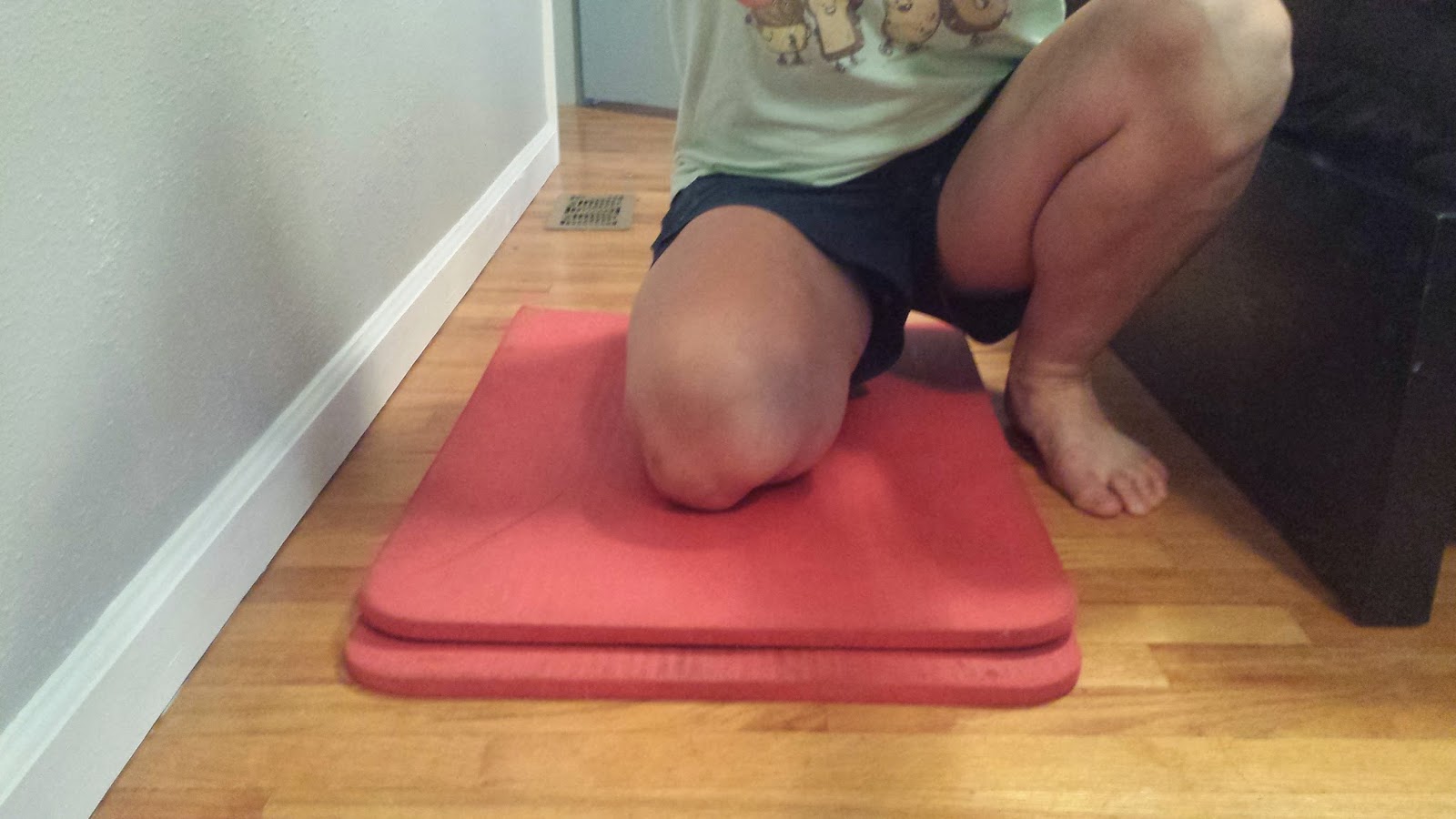Knees
The knees are a STABLE joint. I know what you’re thinking, “the knees move so how can they be stable?” Well, they are a hinge joint, meaning the simply flex (bend) and extend (straighten) in one plane of motion. If too much force is exerted to make it twist or move laterally, you’ve got yourself a ligament tear.
Why do you think some coaches force their offensive linemen to wear knee braces?
To keep them from twisting and busting out at the side.
To keep them from twisting and busting out at the side.
photo credit: boston.com via drjustinrabinowitz.com
(I disagree completely with the ankle braces).
To keep knees healthy and pain free, then, we must ensure adequate mobility in flexion and extension and AVOID excessive knee caving and torque.
So how to do this?
1. Stop walking and running on your toes. Physics forces too much strain on the patella and tibia as weight shifts forward, multiplied by hundreds of thousands of repetitions. When weightlifting, transferring weight to your heel (and backside) when squatting, deadlifting, or lunging will often help alleviate unnecessary stress.
2. Keep the knee above the ankle and foot. Don’t let it cave in or drift too far past the toes.
Lunge – YES! Lunge – No.
Absolutely not. If this is how you squat, stop.
Don’t add weight, and do not jump and land this way.
Better. Joints aligned.
Use your butt and feet to drive the knees out.
3. Roll out tight tissues
Sides of legs and quads. You can pick up one of these rollers almost anywhere now. Here Dean Somerset (one smart Canadian) gives an advanced variation.
4. Stretch your hip flexors
These are some mobilization from the same Dean. Simply hold them a few seconds to make it a stretch. Notice his upright, tall posture. Don’t lean.
An advanced quad version:
5. Ensure you have maximum knee extension and flexion. This is what the knee was designed to do!
Terminal (end range) Knee Extension, with Lee Boyce. Try the band both above and below the knee to see which feels best.
Full Flexion
Sitting on your heels. The most mild version of this is both legs, with tops of feet on ground (heels tucked under).
Single leg version. Much more practical considering one knee usually has more trouble than the other. Note the small roll inward. This is OK because the knee DOES FUNCTION with a SMALL AMOUNT of rotation, especially when the foot is not grounded into the floor. When you try it you’ll notice the difference the angles make.
If you can handle these relatively idle positions, try similar patterns on your toes. Because we are facilitating the DELIBERATE output of full flexion in a CONTROLLED manner, is is OK to use the feet to drive the pattern.
Dr. Justin Rabinowitz out of New Jersey performs the catcher’s squat sequence below:
He also posted a pretty sweet single leg version he calls the cossack regression. He sets up a few inches from the wall and uses it for stability. Again, he toggles from heel down to heel up on balls of feet to facilitate maximum flexion.
TO REVIEW:
- The knees should stay on top the ankles and feet, or slightly outside of.
- Roll the quads and IT band, and stretch the hip flexors to minimize unnecessary ligament and tendon pull on the knee joint.
- The knee is meant to flex and extend. Practice full range of motion with this if it is lacking. Avoid or re-train patterns that cause too much rotation or fall in.
- A problem with the knee is most often caused by the ankles or hip. Check those, and follow up to the foot post to find where the real issue stems.











